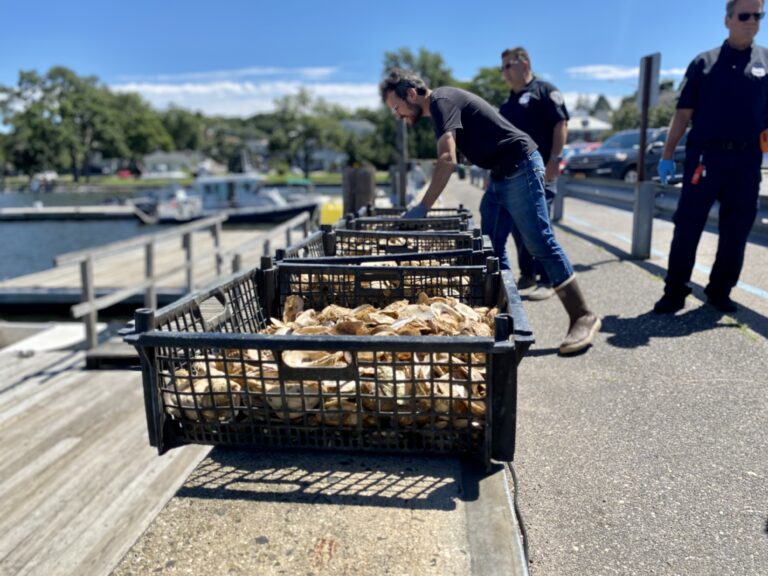
The one million oysters reintroduced into Manhasset Bay in August are alive and well, North Hempstead Councilmember Mariann Dalimonte announced.
“I am so excited that the reintroduced oysters are currently flourishing in Manhasset Bay,” said Dalimonte.
This summer, oysters were planted in Manhasset Bay to help the local ecosystem by improving water quality and cleaning the bay. North Hempstead approved the pilot program resolution in May.
Dalimonte met with Suffolk County Cornell Cooperative Extension team members to reassess the project’s progress on Nov. 18.
The group is running the program in collaboration with the Town and has extensive experience in similar projects across Long Island.
The group took a boat out into Manhasset Bay to assess the oysters. In August, they had dispatched two boats to place the oysters in three different locations, which officials have kept secret to prevent tampering.
The oysters are not only still alive, but they have grown, the group said.
Their positive status is an indicator the project is working. Oysters, which improve water quality by filter feeding, could contribute to the solution. Each adult oyster can filter up to 50 gallons of water per day.
“Having and maintaining a thriving oyster population in one of North Hempstead’s most essential waterways will help to reestablish marine habitats,” said Dalimonte. “[It will] improve the quality of the water, provide economic stimulus by attracting visitors to nearby downtowns and ultimately enhance a destination that is beloved by residents across the greater North Hempstead community.”
In May, Lorne Brousseau, the Cornell Cooperative’s associate marine program director, explained the science behind the oyster restoration.
The oysters placed are spat. These are oyster larvae that have attached themselves to something, such as the surface of another oyster shell.
They will eventually grow into large groups known as oyster reefs or beds. The goal is for them to thrive and grow. More filtering, cleaner water and a healthier ecosystem will arise.
“It doesn’t mean you just throw in a couple of thousand oysters and suddenly you have a pristine bay,” Brousseau said. “It’s something that will take time over many, many years, even decades. But if you get the oyster populations back, it will impact the long-term impact on the water quality.”
The team will return in spring 2023 for another evaluation. Following that, they will decide whether they should introduce more oysters into Manhasset Bay.






